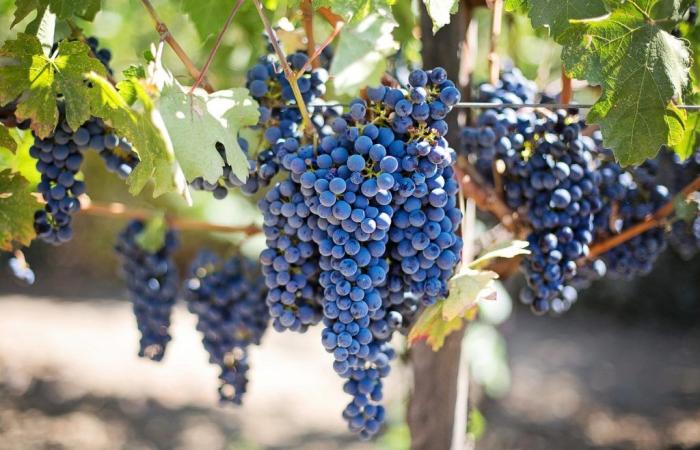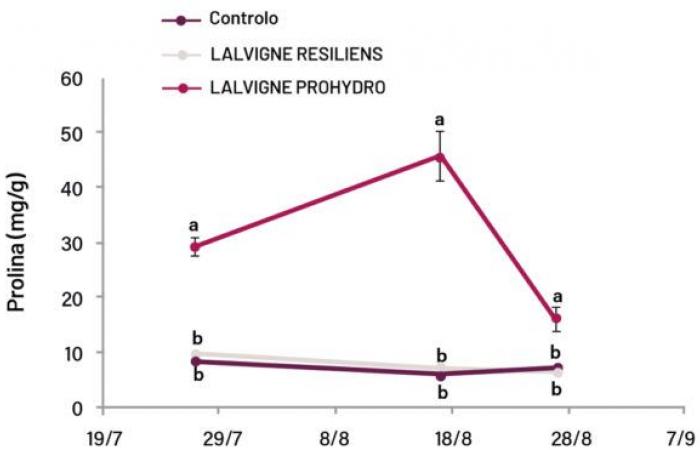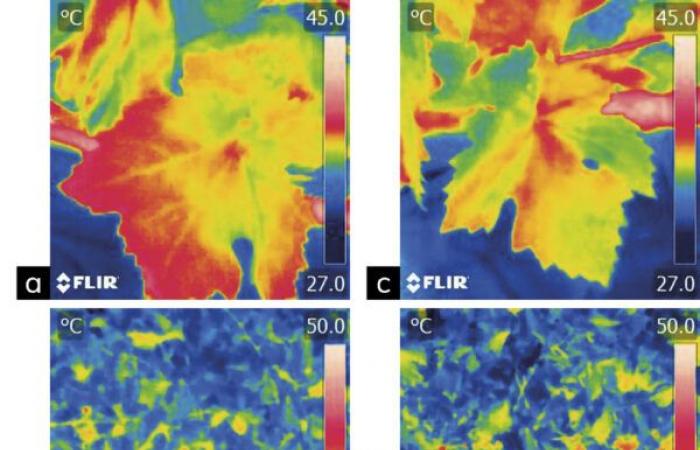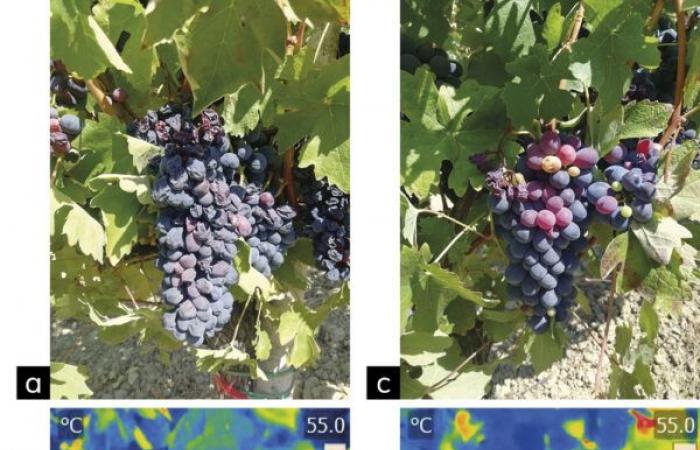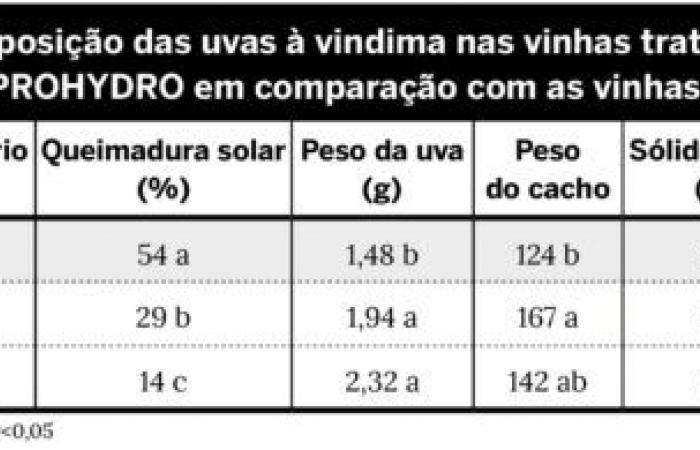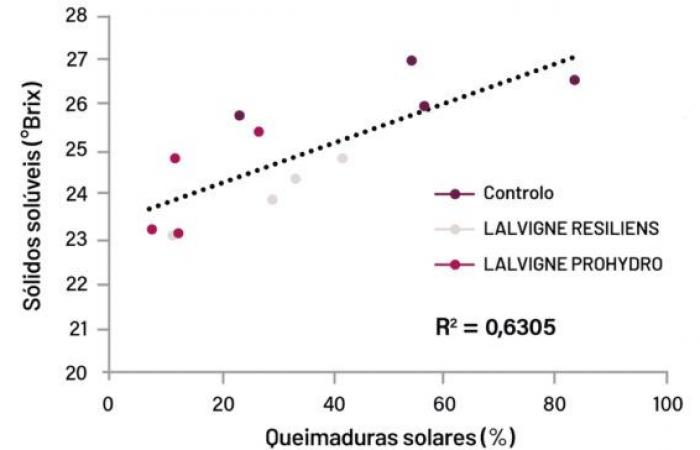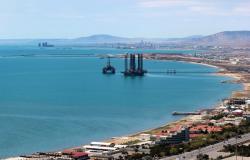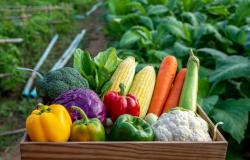Tommaso Frioni1Filippo Del Zozzo1Silvia Pagani1Fabrizio BattistatwoAlberto Palliotti3
1 Università Cattolica del Sacro Cuore, Piacenza, Italy
two Lallemand
3 Università degli Studi di Perugia, Italy
LALLEMAND/LALVIGNE partner in Portugal:
www.proenol.com / [email protected] / Tel. 227 150 840
The multiples stresses Summers are an increasingly recurring phenomenon in all wine-growing areas of southern Europe. They consist of the occurrence of high temperatures, periods of high radiation, in correspondence with long periods of drought. The negative effects on the vine are multiple and are manifested by a reduction in the accumulation of dry matter in the different organs, a general yellowing of the foliage, a reduction in the weight of the berries and the yield, as well as the appearance of sunburn/scald of the vines. bunches and the deterioration of the biochemical balance of the grapes (Palliotti et al., 2020). For years, viticulture has sought new solutions to the problem, both in the long term, that is, choices in the planting phase, and in the short term, that is, techniques that can be applied during the annual vegetative cycle in a flexible and timely manner. These include the development of new natural foliar applications based on the action of microbial compounds, such as inactivated yeast, yeast and bacterial extracts.
Extensive research and development work conducted by Lallemand (patent pending) has led to the definition of specific formulations that can improve the performance of the vine in terms of improving tolerance to stresses abiotic and phenolic and aromatic maturation (Pastore et al., 2020). In the present work, the effectiveness of two new formulations was tested: LALVIGNE RESILIENS, a 100% derivative of selected oenological yeast (Saccharomyces cerevisiae), developed to protect the vine from stresses abiotic that can occur throughout the vegetative cycle of the plant and to favor the recovery of the plant once the situation of stress; LALVIGNE PROHYDRO, based on a derivative of selected oenological yeast (Saccharomyces cerevisiae) and a bacterial extract rich in L-proline, developed to improve the plant’s response to stress water, which is more effective when used before water shortages occur.
Test characteristics
The test was carried out in Colli Piacentini, in Bacedasco (Vernasca, PC), in a Barbera vineyard, a variety particularly sensitive to stress summer. The vines, trained in a double bilateral Guyot system, were divided, according to a random block scheme, between the following treatments:
- control without treatment;
- foliar treatment with LALVIGNE RESILIENS;
- foliar treatment with LALVIGNE PROHYDRO.
The two formulations were applied at doses of 0.5 kg/ha and 1 kg/ha, respectively, according to the scheme presented in Table 1. During the season, on key days, gas exchange in the leaves was measured and obtained thermal images of the leaves, the canopy of the bunches. At harvest, the incidence of bunch scalding was measured and the unit yield, bunch morphology and grape composition were determined.
Effect of treatments on water potential and physiological performance
In the second half of July, due to high temperatures and a long period of drought (very little precipitation in June and none during the entire month of July), leaf water potential measured at solar noon in control vines increased from -0.85 MPa to -1.55 MPa (Figure 1a), a value that indicates a stress severe hydric (Deloire et al., 2020). During the same period, in plants treated with LALVIGNE PROHYDRO, the water potential did not reach such negative levels, remaining at a minimum value of -1.4 MPa. The vines treated with LALVIGNE RESILIENS showed intermediate values between the Control and LALVIGNE PROHYDRO during the test.
This effect translated into an improvement in the physiological functioning of the treated vines throughout the season (Figure 1b and 1c). Between July and August 2020, with water potential values of around -1.5 MPa, the net photosynthesis of control vines decreased from 14 µmol COtwom-two s-1verified in the previous period for 6–7 µmol CO2 m-two s-1. During the same period, vines treated with LALVIGNE RESILIENS and LALVIGNE PROHYDRO maintained a net photosynthesis between 9.5 and 10 µmol COtwom-twos-1(Figure 1b). Similarly, leaf transpiration was also strongly inhibited in early August in the control (only 1 mmol HtwoThe m-twos-1), while in treated plants it remained between 2 and 3 mmol HtwoThe m-twos-1, with no differences between the two formulations (Figure 1c). Of particular interest is the analysis of gas exchange observed in mid-August, when environmental conditions once again became less limiting: with water potentials between -1 and -1.2 MPa. The vines treated with LALVIGNE RESILIENS and LALVIGNE PROHYDRO reestablished their full physiological functionality, while the Control showed significantly lower net photosynthesis and transpiration, around half of the values measured at the beginning of the test, that is, in the absence of stress. The mechanisms by which the two tested products help the vine maintain optimal physiological function under limiting conditions can be classified into different categories. Repeated collection of leaf samples throughout the cycle showed that treatment with LALVIGNE PROHYDRO increases leaf proline concentration 2 to 4 times more than Control and LALVIGNE RESILIENS, depending on the phase of the cycle (+200% at the end of July, +360% in mid-August, +150% in late August). Proline is an osmotically active amino acid, rapidly accumulated in water deficit conditions by the plant, in order to maintain correct cell turgidity through osmotic adjustment mechanisms. Proline also acts as a free radical scavenger, preventing permanent tissue damage caused by oxidizing chemical compounds that the vine produces when under stress. The stimulus induced by the treatment to increase proline biosynthesis is closely related to the increase in leaf water potential observed in vines treated with LALVIGNE PROHYDRO and, consequently, the better physiological functioning of the treated plants.
Figure 1 – Evolution of leaf water potential at solar noon (a), net photosynthesis (b) and leaf transpiration (c) during the test in plants treated with LALVIGNE RESILIENS and LALVIGNE PROHYDRO, compared to untreated plants. Means ± SD (n=12). The arrows indicate the dates of treatments with the two products. Different letters indicate significant differences for p
Figure 2 – Proline concentration in leaves of vines treated with LALVIGNE RESILIENS and LALVIGNE PROHYDRO, compared to untreated plants. Means ± SD (n=12). Different letters indicate significant differences for P
Treatment with LALVIGNE PROHYDRO also reduced the average leaf temperature by 2°C and the average cluster temperature by 2.7°C compared to the Control (Figure 3) and the vines treated with LALVIGNE RESILIENS showed intermediate thermal values. This effect can be attributed to the maintenance of good leaf transpiration rates that allow tissues to dissipate energy in the form of heat and lower their temperature. Consequently, in mid-August, the vines treated with the microbial derivatives had significantly higher Fv/Fm ratio values than the Control (0.72 vs. 0.65). The treatment thus avoided the triggering of irreversible photoinhibitions (yellowing), which would have led to the loss of physiological functions in the basal part of the foliage, as observed in the control.
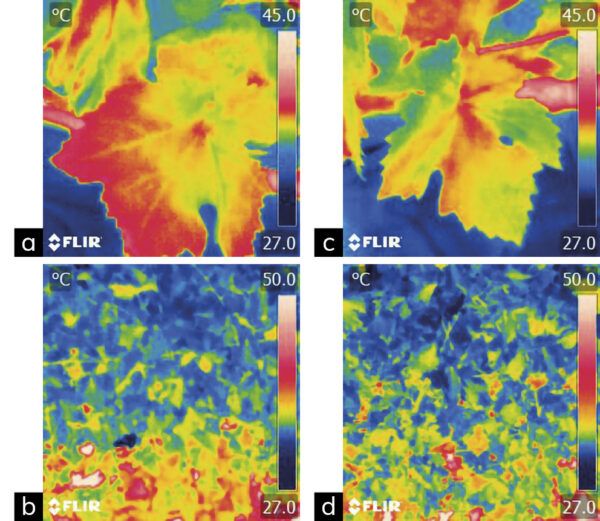
Figure 3 – Thermal images of leaves and whole bunches in control vineyards (a, b) and in vineyards with foliar treatment with LALVIGNE PROHYDRO (c, d) captured on July 21, 2020.
Reduction of bunch sunburn and grape composition at harvest
Treatment with LALVIGNE PRODYDRO not only lowered leaf temperature, but also bunch temperature. At the end of veraison, the treated bunches had an average temperature lower than the control by 1 °C (Figure 4). This effect was accompanied by a reduction in the spread of sunburn in bunches exposed to the sun, which went from 54% in the control to 14% in grapes treated with LALVIGNE PROHYDRO (Table 2). Treatment with LALVIGNE RESILIENS did not reduce curl temperature, but contributed to a reduction in the incidence of sunburn (29%) compared to the control.
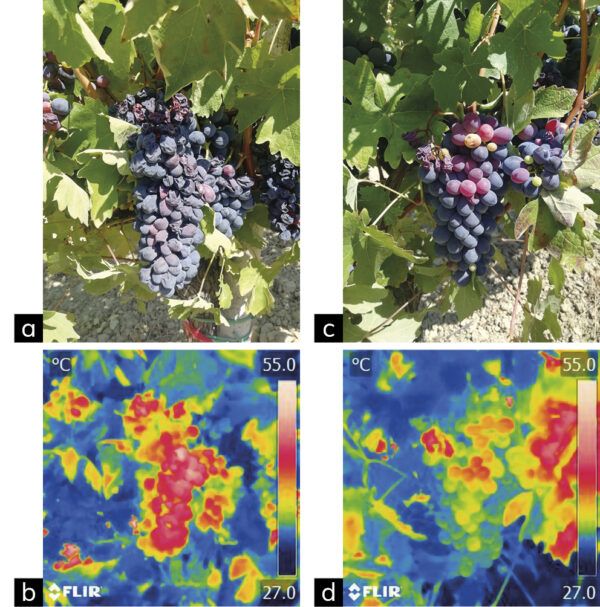
Figure 4 – Photographic and thermal images of untreated curls (a, b) and curls treated with LALVIGNE PROHYDRO (c, d).

The lower incidence of berry dehydration prevented a reduction in the average weight of the berries, which was 1.48 g in the Control and 1.94 g and 2.32 g in the LALVIGNE RESILIENS and LALVIGNE PROHYDRO, respectively, as well as the average weight of the curls. This fact was reflected in a better yield in LALVIGNE RESILIENS (3.45 kg/vine vs. 2.15 kg/vine in control), while the vines treated with LALVIGNE PROHYDRO (2.76 kg/vine) showed an intermediate productivity in relation to the other two conditions. As the treatment with LALVIGNE RESILIENS is carried out pre-flowering, its greatest effect on production may be related to an increase in the fruit set rate with a consequent increase in the number of berries per bunch. The spread of sunburn in the Control plants caused a rapid increase in sugar levels due to the dehydration of the grapes, resulting in clearly excessive values (26.4 °Brix), a phenomenon to which the Barbera variety is particularly sensitive. In the treated grapes, sugars were significantly lower and were in accordance with the optimal reference values for the variety (24.1 °Brix). In particular, regardless of the experimental conditions, the concentration of sugars is directly related to the propagation of scalding (Figure 5). On the other hand, the total acidity is similar in all experimental conditions. As a result, the optimal balance between sugars and acidity at harvest was preserved in the treated vineyards, while in the Control vineyards this relationship was significantly higher due to the high concentration of sugars associated with the generalized dehydration of the berries.
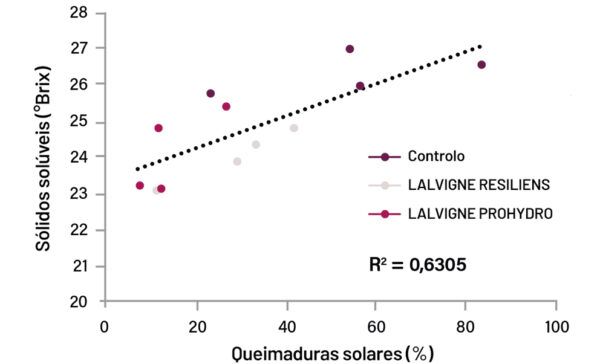
Figure 5 – Correlation between the spread of bunch burn and the sugar concentration in the grapes.
Application Considerations
LALVIGNE RESILIENS and LALVIGNE PROHYDRO are two new microbial derivatives that differ in composition and production technology, with specific effects on plant physiology. LALVIGNE RESILIENS, used at a dose of 0.5 kg/ha from the first stages of shoot growth, is capable of promoting greater basic metabolic activity and has been shown to protect the vine from stress heat during the hottest phases of summer, allowing important increases in production. LALVIGNE PROHYDRO, by stimulating the biosynthesis of endogenous proline in the leaves, is a specific tool to protect the vine from drought, preserving water potential and photosynthesis when water resources become a limiting factor. In a vineyard where the stress summer season caused strong dehydration of the berries and compromised the biochemical balance of the grapes from the Control vineyards, both products, with their specific actions, were effective in containing these phenomena, avoiding drops in yield and allowing the grapes to be harvested with a composition more balanced of the different parameters that contribute to the final quality of grapes and wines.
The bibliography is available upon request from Proenol.
The article was originally published in Vida Rural.
Tags: Multiple summer stresses foliar treatments based microbial derivatives
--
